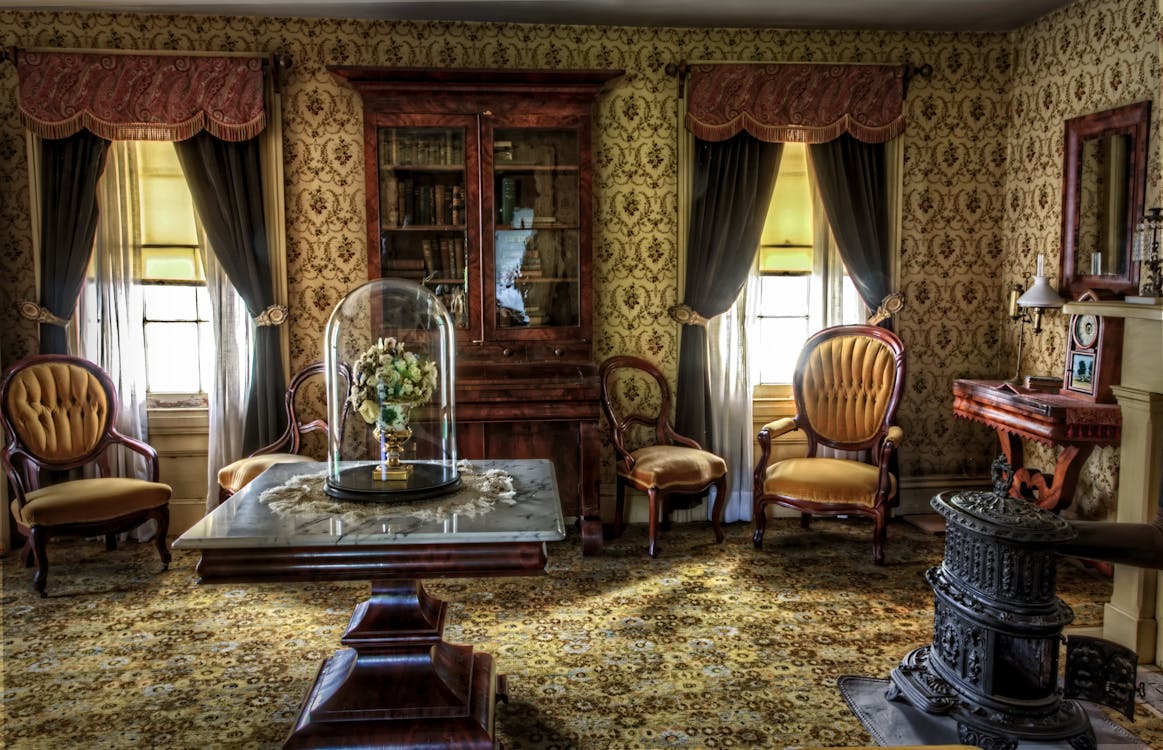
The History of Window Coverings: From Ancient Civilizations to Modern Homes
Home window coverings have become part of human history for countless years, progressing from primitive products to the advanced styles we appreciate today. While we frequently admire how window therapies enhance our homes, couple of recognize the interesting journey that brought them here. Allow's take a trip with time and explore exactly how societies across the globe have actually shaped the development of window curtains, tones, and window drapes right into what we now consider essential parts of home design.
Old Beginnings: Function Before Fashion
The earliest window coverings weren't about making a home appearance stylish; they were created out of need. Ancient Egyptians are believed to have actually used reeds and papyrus to cover openings in their homes, providing color and some protection from the unrelenting sun. These treatments were lightweight and very easy to replace, perfect for the extreme desert setting.
At the same time, across the Mediterranean, the Greeks and Romans presented fabrics like bed linen and wool to their insides. These very early types of window drapes hung freely over doorways and windows, aiding to control interior temperatures and add a touch of personal privacy. Roman architecture later affected how window therapies were designed to work not equally as a guard, but as a luxurious statement in wealthier houses.
The Middle Ages: Heavy Fabrics and Practical Uses
As European castles and homes grew in dimension, windows ended up being bigger-- therefore did the demand for better coverage. Throughout the Middle Ages, heavy products like velour and brocade were preferred for their ability to block drafts and keep warmth. These thick curtains were not purely ornamental; they acted as crucial elements for warmth and comfort in stone-built frameworks.
Home window therapies in this duration were generally abundant in shade, delicately stitched, and often doubled as makeshift walls in large halls. Decorative patterns and lush fabrics signified social status, making window treatments a beneficial part of indoor style also then.
The Renaissance: Artistry Meets Practicality
The Renaissance sparked a renewed passion in art, society, and home style. With improvements in weaving and textile manufacturing, home owners gained access to a wider selection of fabrics and patterns. Home window treatments came to be an imaginative extension of a home's aesthetic, typically echoing the majesty discovered in Renaissance paintings and sculptures.
Tapestries and stitched window curtains were a staple of high end homes, their styles informing stories of mythological, religious, or day-to-day life scenes. The fad of using drapes not just for windows yet additionally around beds and entrances ended up being widespread, weding function and appeal.
The 18th and 19th Centuries: Refinement and Innovation
As the Industrial Revolution got momentum, textile manufacturing took off. Fabrics came to be extra cost effective and obtainable to the middle course, resulting in an era where home window treatments were not just for the wealthy. read here Innovations in poles, rings, and pulley systems allowed for the very early versions of what would certainly later on inspire Hunter Douglas motorized blinds.
During the Victorian period, the style of window therapies ended up being even more split and ornate. Homes flaunted heavy window drapes layered over shoelace sheers, with tassels, fringe, and intricate tiebacks finishing the appearance. Window treatments were no longer just sensible however essential elements of interior design, mirroring the homeowner's preference and condition.
The 20th Century: Embracing Minimalism and Technology
The 20th century brought transformations. The clean lines of modernism moved choices from luxury to simpleness. Property owners moved away from heavy drapery towards lighter, more functional designs that highlighted the design of the home instead of frustrating it.
As innovation progressed, so did window coverings. Innovations resulted in the development of products like Hunter Douglas motorized shades, providing house owners comfort and specific light control at the touch of a switch. This technological leap was greater than a deluxe; it stood for a new age of living where comfort, design, and automation balanced effortlessly.
Textile options also came to be extra diverse, with artificial materials supplying budget-friendly, sturdy, and easy-to-maintain options. This change allowed individuals to experiment with different appearances and functionalities, depending upon the demands of each room.
Today's Window Coverings: A Blend of Style and Smart Living
Today, window therapies are a smooth mix of kind and function. Whether you like typical window curtains or advanced Hunter Douglas motorized shades, the variety of alternatives is more comprehensive than ever before. Modern homeowners can choose coverings that perfectly match their lifestyle, style, and sustainability choices.
Smart home assimilation has actually taken window coverings to an entirely brand-new degree. Equipments attached to smart devices or voice-activated aides provide the ability to adjust tones based on time of day, temperature level, and even your mood. And while mechanized options like Hunter Douglas motorized blinds are at the center of this motion, there continues to be a deep admiration for the traditional elegance that standard drapes and curtains give a room.
Ecologically aware choices are likewise gaining appeal, with products like bamboo, organic cotton, and recycled materials coming to be important factors in buying choices. Sustainability, as soon as an afterthought, is now a leading trend in interior design, particularly when it involves home window therapies.
The Ever-Evolving Art of Dressing Windows
Home window treatments have absolutely come a long way given that the days of papyrus displays and woolen towels. From the heavy, sophisticated window drapes of middle ages Europe to the streamlined, technology-driven options offered today, their advancement mirrors the more comprehensive changes in society, innovation, and layout choices.
In every period, the objective behind home window therapies has actually continued to be regular-- offering protection, comfort, and beauty-- but the products, modern technology, and layouts have actually constantly progressed to satisfy the changing needs of the moments. As homes end up being smarter and way of lives remain to shift, it's enjoying picture what the future of home window coverings will certainly appear like.
Follow us for more amazing explorations into home layout trends, and remain tuned for even more stories that commemorate the ageless beauty and technology found in every edge of your living space!
 Anthony Michael Hall Then & Now!
Anthony Michael Hall Then & Now! Amanda Bearse Then & Now!
Amanda Bearse Then & Now! Danny Pintauro Then & Now!
Danny Pintauro Then & Now! Naomi Grossman Then & Now!
Naomi Grossman Then & Now! Nicholle Tom Then & Now!
Nicholle Tom Then & Now!